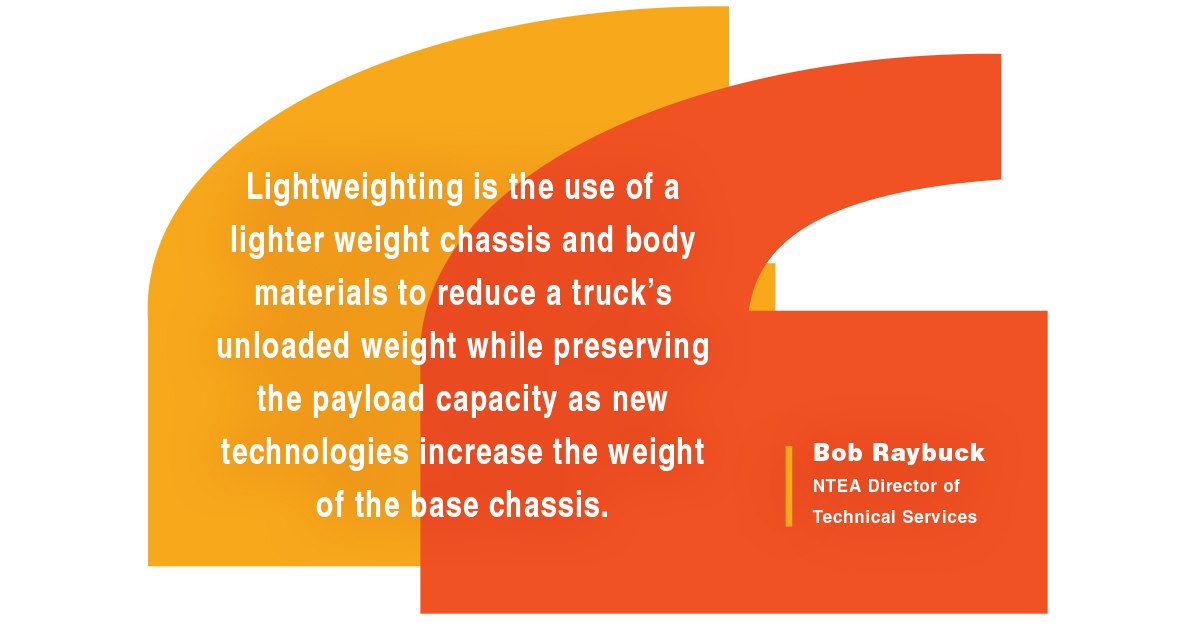Key considerations around lightweighting for efficiency (sign up to access article)

From an NTEA member
New battery electric vehicles (BEVs), advanced fuel options and driver qualification requirements, including electronic hours of service logging requirements, are causing our customers to examine the gross vehicle weight ratings (GVWR) and payload capabilities of their vehicles. Lightweighting may be a way to maintain payload while reducing GVWR and achieving efficiency goals.
Many companies are searching for ways to improve operational flexibility when updating their fleets. For example, they may need a large variety of vehicles that any of their employees can drive. Additionally, they might want to purchase vehicles that aren’t subject to driver regulations, such as electronic data logging and other driver qualification requirements that apply to vehicles over 10,000 pounds GVWR. These companies are also interested in adopting sustainable and efficient technologies, including BEVs and other fuel economy improvement solutions, with their new purchases. Many fleets are adopting lightweighting strategies to enable them to move down in vehicle class to a 10,000-pound or less GVWR while maintaining usable payload requirements.
NTEA members, log in to read full article.
Not a member? Sign up to access full article.
NTEA collects data to operate effectively and provide you the best experiences with our products, resources and services. We value your privacy and are committed to ensuring the security of your information. We do not redistribute or sell your personal data, but your information may be utilized for further communications from NTEA. Please review our privacy policy to understand the measures we take to protect your information and how we handle your data.